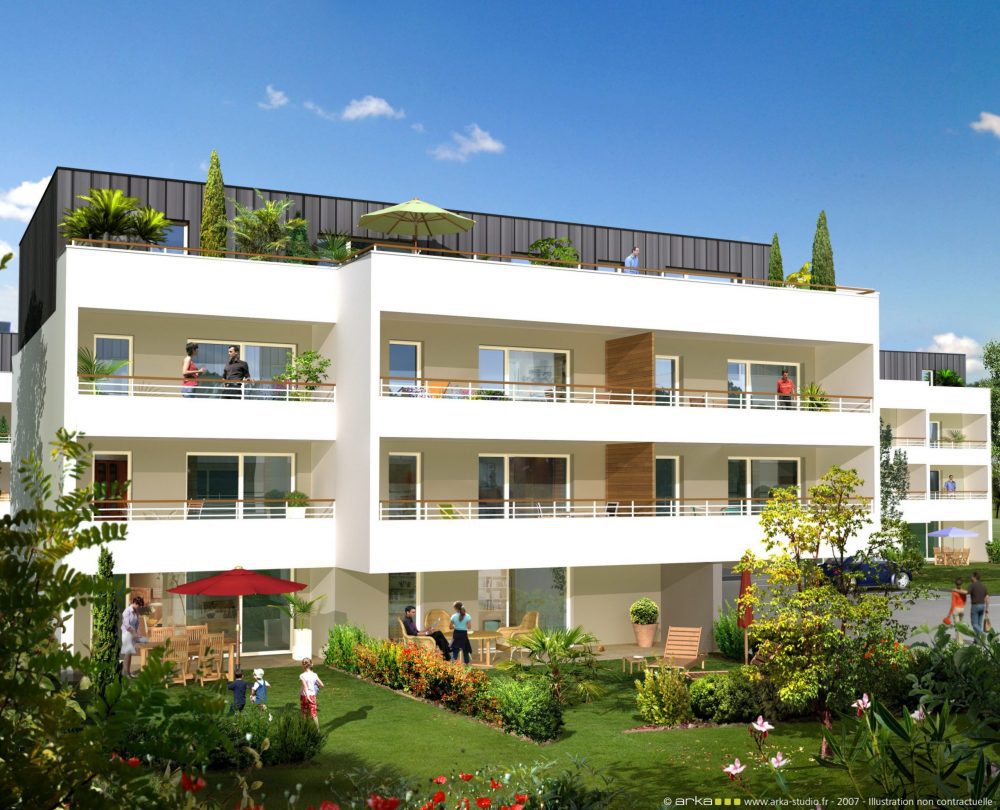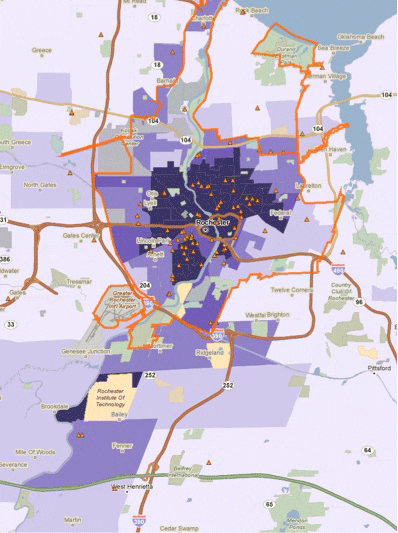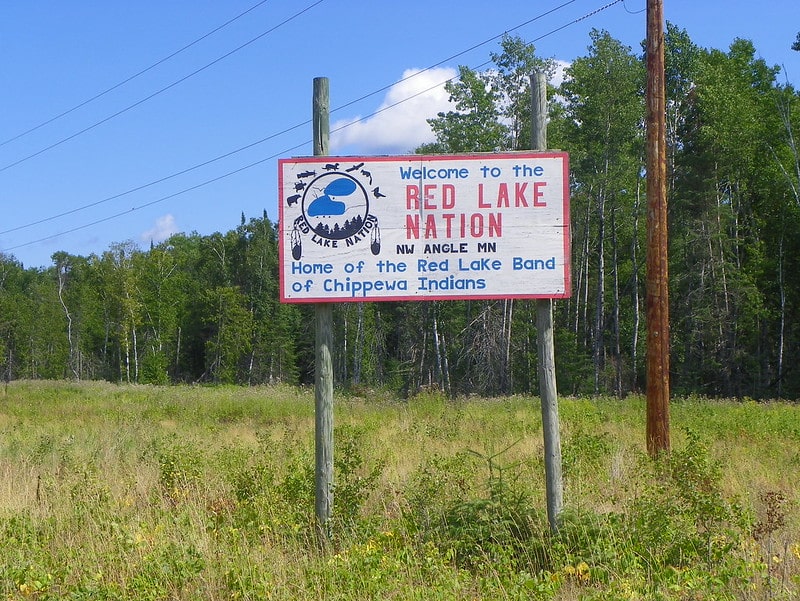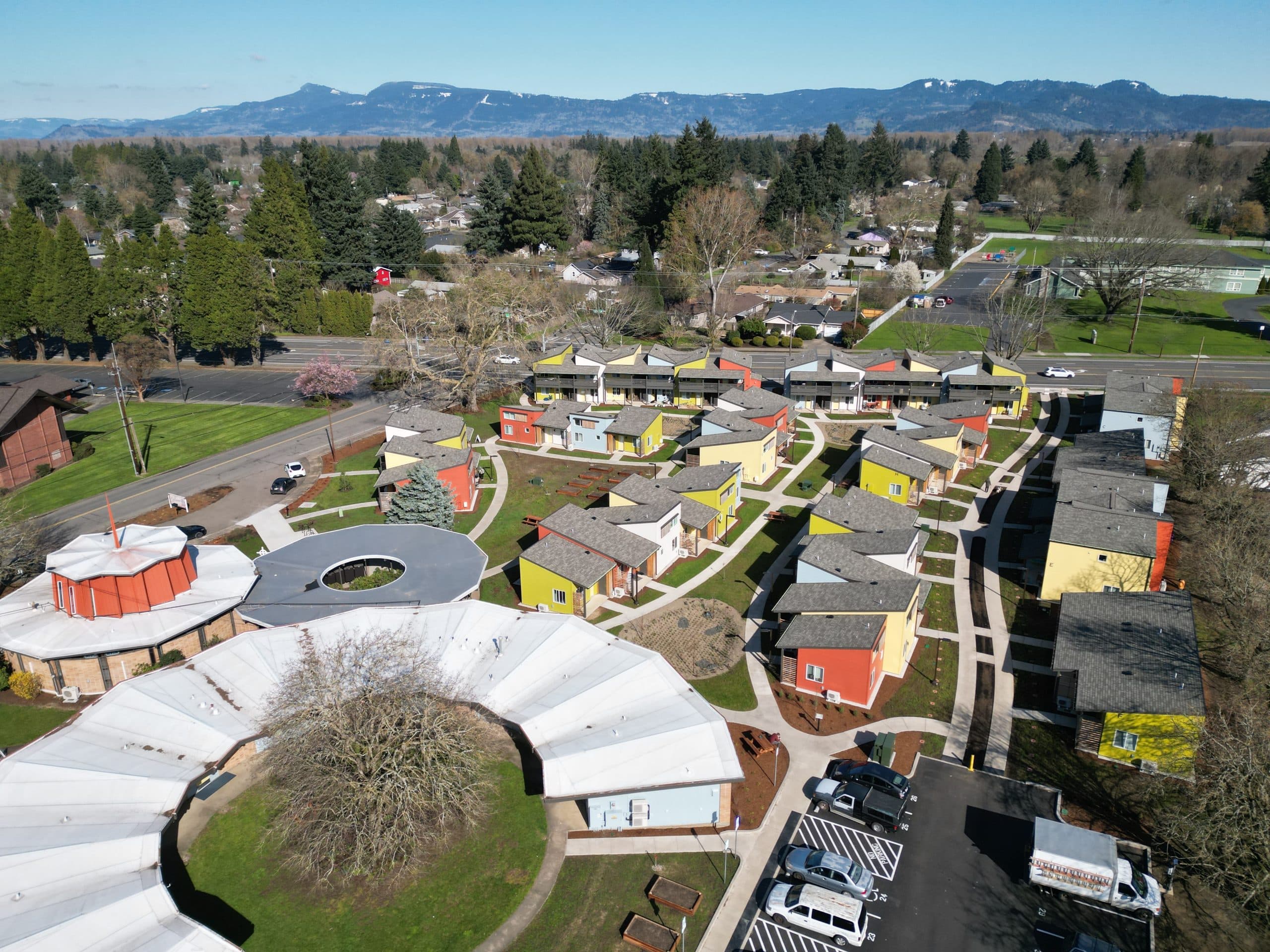Along with most Rooflines readers, I believe that having some portion of a community’s housing as long term or permanently affordable is a desirable policy goal. That said, though, I’ve found myself wondering what might be the best way to actually pursue that goal. It is by no means obvious that the default answer of “build it” is the right one. About eight years ago, I spent a few weeks in France talking to developers, nonprofits, and public officials there about how they did affordable housing. It’s well known that from the 1950s through the ’70s, France built huge public housing projects, a lot of them on the outskirts of major cities, only to see many of them turn into a social nightmare. The French learned some lessons from this experience. As a result, they came up with a very different approach.
Now, when French developers build subdivisions or condo projects, nonprofit housing corporations enter into turnkey contracts with the developer to buy blocs of apartments or houses, up to a maximum of 50 percent, of the units in the development. Based on those contracts, the nonprofits apply for a package of government loans, grants, and tax breaks so they can both buy the units and make sure they remain affordable. When the projects are completed, the nonprofit buys the units and operates them as affordable rental housing. I wrote a chapter about this program in a book that Nico Calavita and I wrote about inclusionary housing a few years ago. On top of that, the government also provides tax incentives for mom and pop owners to buy condos and rent them to affordable and middle-income renters; and it also offers combinations of tax incentives and zero percent second mortgages to enable moderate-income families to buy homes and condos in the same developments.
The point is that developers do what they do best, which is to build housing, and the housing programs take it from there. As a result, a lot of French housing developments contain a mix of both market-rate and subsidized rental units, and both market-rate and subsidized owner-occupied units. We could learn something from that approach.
Even though we don’t like to talk about it, most everyone in the housing industry knows that many market developers create a decent product for a lot less than Low Income Housing Tax Credit (LIHTC) projects going up in the same area. There may be some differences in materials and finishes, but that doesn’t account for most of the cost difference. Even in relatively low-cost areas like Arizona, unit costs on most new LIHTC projects run $200,000 to $250,000 and up, but developers in Phoenix are selling brand new three bedroom, two bath houses for well under $200,000. Market discipline has its uses.
Meanwhile, lots of areas have a lot of good existing housing available. When I checked recently on Zillow, there were over 1,000 houses for sale in Phoenix at $200,000 or less, but Phoenix is, believe it or not, a higher than average cost housing market. In the fall of 2015 (again from Zillow) the median sales price in Dallas was $132,500, Columbus $118,000, Tulsa $107,400, and on. These are not low-end prices; they are citywide medians. And these are not low-end cities. If one could use LIHTC funds simply to buy blocs of units from developers, or buy existing homes on the private market and turn them into long-term affordable rental housing, we might end up creating a lot more affordable housing than under the current system. We would save millions in construction costs, transaction costs, and in the costs of keeping projects alive for year after year while putting together ever more complicated subsidy layering schemes, and dramatically reduce the multi-year lag from when a project is first conceived to when the first tenants move in.
On top of that, this approach offers ways to further fair housing and help families move into areas of opportunity that could be executed far more simply and efficiently than the current struggle of convincing suburban municipalities to rezone land for LIHTC projects, or permit them to happen. The great majority of LIHTC projects are located in areas that have weak markets or no markets at all—low value, high-poverty inner city areas—as this map of the Rochester, New York area illustrates below. Almost all of the LIHTC projects in the Rochester area are in places with poverty rates of 40 percent or more. While some of these projects may be contributing to the revival of those areas, many are there because it’s the path of least resistance. Meanwhile, good houses in solid neighborhoods, both urban and suburban, are available at far less cost.
[Above: POVERTY CONCENTRATIONS AND LIHTC PROJECTS IN ROCHESTER, NY
The darker the color, the higher the poverty, with the darkest color showing areas where 40% or more of the population is below the poverty level. Each triangle represents a separate LIHTC project. SOURCE: PolicyMap]
I’m not suggesting that we stop building new purpose-built affordable housing projects, just a lot less. The approach I’ve described might not be the best strategy everywhere. There are some circumstances where an LIHTC project can actually make a real difference for a struggling urban neighborhood, although I think they are fewer than often claimed. There are also a few places in the United States, like San Francisco and Washington, DC where the market has just gotten too expensive, and where conventional LIHTC projects, even if they cost $300,000 or more per unit, are still a good deal. These areas, however, are the exceptions.
The LIHTC program currently can not be used to buy houses in good condition—whether existing or newly built—and virtually no other money is available for that purpose. I realize we’re doing what we can with the tools we have, but they may not be the right tools. Instead of going on using them, perhaps we should be thinking more about whether what we’re doing really makes the most sense for the millions of families who not only need better housing, but deserve the opportunity to live in better neighborhoods, and how we might change things.
Photo credit: Courtesy of Nexity, a French housing developer. The photo is of a project in a small city in Brittany, in which Nexity sold half of the units to a non-profit housing corporation for social rental housing. The other half were sold to homebuyers at market rate.







I have been thinking about the policies and mechanisms that created multi family stock in this country and in my hometown of Chicago. HUD has a terminated mortgage insurance database that shows, since 1940, the buildings it stimulates through insurance and interest right downs – via the Sections of the first Housing Act. Take a glance at the properties that were built housing for the working class. Seems to me that significant precedent exists to renew, revive, or mimic these financing streams.
Nice idea however the problems are services, like transportation and other appointments that must be traveled to. Additionally it doesn’t take developers long to start selling $200,000 houses to those needing/desiring affordable options in housing, for $300-400,000. We have been seeing this for many decades.
I think this is a potentially quite interesting idea—and also agree with the other commentators who are concerned about service provision and other issues. This option may not work well for all households with low incomes (especially those who would benefit from onsite services or case management), but it may work well for some. At a minimum, it would provide an additional option for creating inclusionary housing in jurisdictions where inclusionary zoning is not enabled or is outright prohibited. More arrows in our quiver sounds good to me.
Two additional thoughts:
—Since developer fees are a major source of operating support for CDCs, there would be a need to address this in this financing model.
—I think the point is to remove the units from the speculative market, either for a number of years or permanently. So, in addition to creating rental housing, let’s consider this model for shared equity products—-such as land trust homeownership, limited equity co-ops, etc.—-as well as for rental housing.
San Francisco is expensive, but the city has already embarked on your recommended strategy through its Small Sites Program. The city funds nonprofits and community land trusts to acquire buildings of six units or less whose residents typically include longterm tenants facing Ellis Act evictions. So the strategy stops evictions and adds to the permanently affordable housing supply.
This idea makes me want to move to France but it’s more or less navel gazing in the USA where the lack of resources for affordable housing is a far bigger problem than the way it’s delivered.
We have a similar system in the UK which is the Section 106 of the National Planning Policy Framework (NPPF), private developers have to provide a proportion of affordable housing on site (anything between 20 to 50% depending on local planning policy).
The proportion of affordable housing is then modulated and negotiated depending on the size, nature, and financial viability of the development so that financial contributions may be offered in lieu or provision may be reduced so that planning obligations do not stifle development.
The affordable housing is then acquired at below market prices by registered social landlords.
This is a good system insofar as it is flexible, and provides a mix of tenures across different areas. However, the lack of certainty drives land prices up as developers make different bets on the level of affordable provision they will be liable to achieve. Viability reports then provide some kind of dark justification for lower and lower levels of provision.
Rejuvenating proven systems needs to be evaluated. The 221(d)(3) Below Market Interest Rate program produced a lot of affordable housing in a short time both rental and cooperative. After 20 years or in subsequent years, practically all of the rentals disappeared physically or as affordable housing.. Today, 40-50 years later most of the cooperatives remain providing housing affordable in their market area affected only by the cost of operating decent, safe and sanitary housing. The government had to make substantial investment in the program (which is why Congress killed it) but the most all of the cooperatives created paid off their mortgages with interest in full to the investors to whom the government sold those mortgages at discounted prices. Based on this experience, the program should be rejuvenated for housing cooperative only.
If the funds were available non-profits, with experience, could produce affordable housing as well and as inexpensively as any private developer. Just eliminating the profit motive the costs would be lower. While I agree that using LIHTC adds significantly to the cost of affordable housing, if it is “the only game in town” we are stuck with it. The concept of using market rate housing in a mixed income development to subsidize the affordable housing units is nothing new, but the density and number of units is usually objectionable to the neighborhood and or the municipality.
Without a federal housing policy that allocated real dollars to the development of affordable housing, the best we can hope for is the development of a few homes a year. Bring back the Section 8 new construction program that allowed private developers to build subsidized housing in cooperation with private lending institutions and underwrote their mortgages with project-base vouchers.
In the late 1970s, Lee Adler in Savannah, GA and Art Zeigler in Pittsburgh PA combined privately-raised donations with various HUD loan/mortgage insurance programs and private banking support to re-invigorate existing/older housing stock to help meet the need for affordable rental housing in their respective cities.
While many of the HUD programs have changed, and private banks have become less cooperative, these donation-support, rehabilitation-focused reinvestment funds called preservation revolving funds continue to reuse existing/older housing to encourage diversity in the neighborhoods where they stand… as partners with both nonprofit and for profit developers.
Perhaps housing leaders might consider the 65 such programs-funds as a partner in this effort to create more affordable housing units. Arthur Ziegler continues to run his programs and is considered a leader in the housing development field — https://phlf.org/financing-sources/overview/